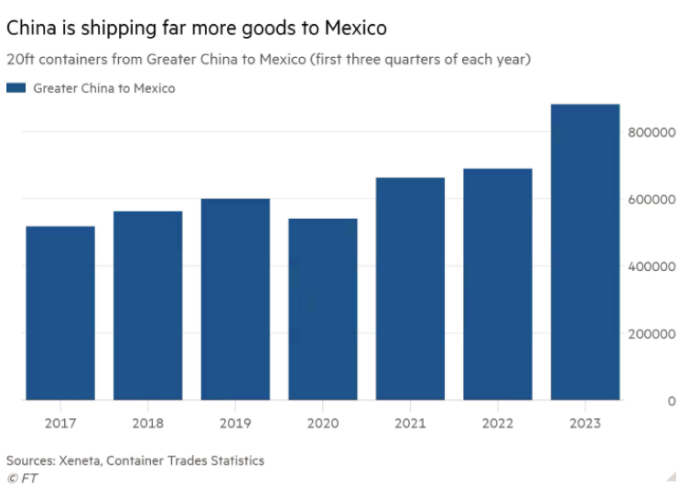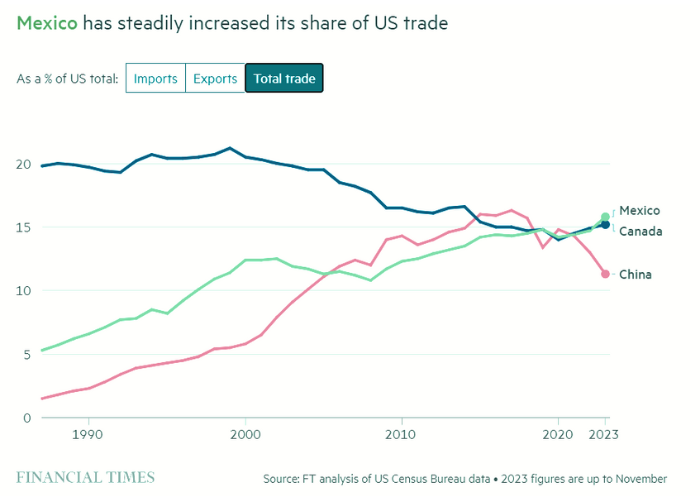Despite shifts in geopolitics and the relocation of manufacturing hubs to countries like Vietnam and Mexico, China maintains its position as a key trading partner with both Canada and the USA. By redirecting trade through these nations, China has crafted a viable strategy to circumvent tariff barriers. This is exemplified by China’s tactical diversion of exports via Mexico, a strategy that undermines US efforts to lessen its reliance on Chinese goods. An analysis of trade data underscores a significant increase in the volume of goods moving from China to Mexico, with the number of 20ft container shipments escalating from 689,000 in the first three quarters of 2022 to 881,000 over the same timeframe in 2023. This development has positioned Mexico as the leading exporter to the US (as highlighted in last month’s newsletter), underscoring the challenges faced by the US in disentangling its supply chains from the grip of Chinese manufacturing.

According to the research from Financial Times this month, despite efforts initiated by the Trump administration and continued under Joe Biden to lessen US reliance on Chinese products by imposing tariffs, less than 15% of US imports now come directly from China, down from over 20% in 2017. However, this has not significantly diminished the presence of Chinese goods in the US market, as these are still entering via Mexico without facing the same tariffs.
Chinese manufacturers, especially in the auto industry, have capitalized on this route. For instance, Chinese-owned companies in Mexico exported $1.1 billion worth of auto parts to the US in 2023, up from $711 million in 2021. Mexico’s imports of vehicle parts from China also surged to nearly $9 billion last year.
This situation demonstrates the challenges the US faces in shifting away from Chinese-manufactured goods. Despite new tariffs and investment screening measures introduced by Mexico and the US, the deep integration of Chinese products into global supply chains poses significant obstacles to these efforts.

The data and proposed graphs underscore the intricate dynamics of global trade and the difficulty in altering established supply chains, reflecting the broader geopolitical and economic interdependencies that challenge US policy objectives.
In response to the evolving global landscape of diversification, innovative logistics routes are emerging. If you’re looking to explore new lanes and routings with competitive pricing, reach out to Canaan Group for tailored solutions.
Reference:
Financial Times. (2024, February 21). “China Circumvents US Tariffs by Shipping More Goods via Mexico.” Claire Jones, Christine Murray, and Keith Fray. Retrieved from https://www.ft.com/content/2ca4da83-f858-4215-88e7-544adf0aa18e.


